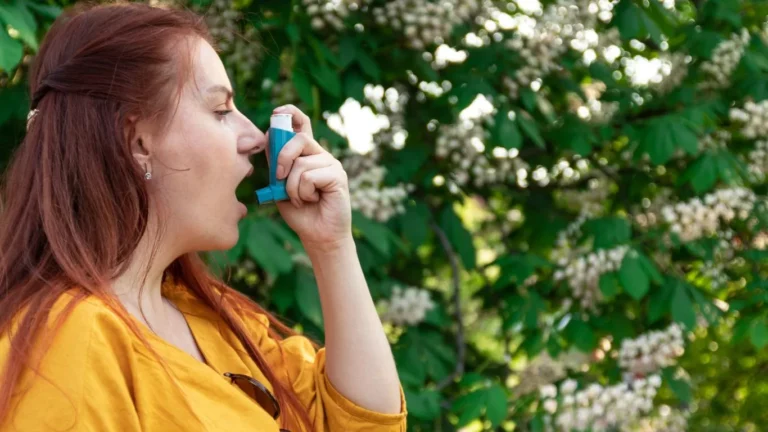Understanding Environmental Factors Triggering Asthma: What You Need to Know
Living with asthma means you have to be extra mindful of your environment. But did you know that certain everyday factors can be the cause of your asthma flare-ups? Let’s explore these triggers and what you can do to manage them.
If you’ve been dealing with asthma, you probably know that your environment can have a huge impact on how well you manage it. Whether it’s the weather, allergens in the air, or pollution, environmental factors can often be the tipping point for an asthma attack. So, let’s talk about some of the most common environmental asthma triggers, how they affect you, and what you can do to protect yourself.
What Are Environmental Factors That Trigger Asthma?
Environmental factors can make asthma symptoms worse. These triggers vary from person to person, but there are some common ones that are well-known to spark asthma attacks. Understanding them can help you manage your asthma better, so let’s break down the top culprits.
Air Pollution
Air pollution is one of the biggest offenders when it comes to asthma. Whether it’s outdoor pollution from car exhaust, industrial emissions, or indoor pollution from things like cigarette smoke or even gas stoves, poor air quality can make it harder for your lungs to breathe easy.
For people with asthma, pollution can cause inflammation in the airways, leading to wheezing, coughing, and shortness of breath.

Pro Tip: Stay indoors on days when air quality is poor. Use air purifiers at home to filter out pollutants, and if you’re sensitive, wear a mask when going outside on high pollution days.
Allergens (Pollen, Dust, Mold)
Allergens are another major asthma trigger. Pollen from trees, grasses, and flowers can send asthma sufferers into full-on allergy mode. Dust mites, which live in bedding, carpets, and furniture, are also notorious for making asthma worse. Mold, which thrives in damp and humid environments, can also trigger symptoms like coughing, wheezing, and chest tightness.

Pro Tip: Try to keep windows closed during pollen season, especially in the morning when it’s most active. Clean your home regularly to minimize dust and mold buildup, and use allergen-proof pillow and mattress covers to keep dust mites at bay.
Weather Changes
Weather changes—especially when the temperature drops—can cause asthma symptoms to flare up. Cold air can irritate the airways, making it harder to breathe. On the flip side, hot, humid weather can make the air feel thick, making it difficult for those with asthma to catch their breath.
Pro Tip: Dress warmly in cooler weather and try to cover your nose and mouth with a scarf to warm the air before it hits your lungs. When it’s hot and humid, stay indoors in air-conditioned spaces if you can.

Strong Smells and Chemicals
Sometimes, it’s not about the air being dirty or allergen-filled—it’s about strong scents. Things like perfumes, cleaning products, smoke, and even strong foods can trigger asthma. These strong smells can irritate your airways and cause you to start wheezing or coughing.
Pro Tip: Try to avoid strong smells and fragrances when you can. Look for cleaning products that are labeled as asthma-friendly, and if you’re in a public place with a lot of smells (like a restaurant), it might be a good idea to keep a rescue inhaler nearby.
How Can You Minimize Exposure to These Triggers?
Now that you know what environmental factors can trigger your asthma, let’s talk about how to handle them. The goal is to avoid these triggers as much as possible, or at least minimize their impact.
1. Create an Asthma-Friendly Home
Your home should be a safe haven, so make it asthma-friendly. This means regularly cleaning your space to avoid dust and mold, using air purifiers, and making sure your home is well-ventilated but not drafty. Also, avoid using harsh cleaning chemicals that can worsen asthma.
2. Be Aware of Seasonal Changes
Pollen levels can vary throughout the year, so staying aware of seasonal changes is crucial. During high pollen times, it’s helpful to keep your windows closed, shower after being outside, and avoid hanging laundry outside (where it can catch pollen).
3. Check Air Quality
On days with poor air quality, try to limit your time outdoors, especially during peak pollution hours. Many weather apps have air quality readings, so it’s easy to keep track of the pollution levels around you.
4. Use Your Inhaler or Medications as Directed
Managing your asthma means being prepared. Always carry your inhaler or other prescribed medications with you in case of an attack. Your doctor can help you determine the right asthma management plan to stay in control.
Conclusion
Asthma isn’t always easy to manage, especially when environmental factors are involved. But the good news is that once you understand your triggers and take steps to avoid them, you can reduce the chances of a flare-up. By staying aware of the air quality, allergens, and weather conditions, and by making your home asthma-friendly, you can breathe easier and live life to the fullest.

Appendices
FAQs
Here are some frequently asked questions about environmental factors triggering asthma:
- What is the most common environmental trigger for asthma? Air pollution and allergens (like pollen and dust) are among the most common triggers for asthma attacks.
- How can I reduce my exposure to pollen? Keep windows closed during pollen season, shower after being outside, and keep air purifiers running in your home.
- Can cold weather make asthma worse? Yes, cold air can irritate the airways and cause symptoms to worsen. Dress warmly and try to cover your mouth and nose when it’s cold.
- Are there any specific cleaning products I should avoid? Avoid products with strong fragrances and harsh chemicals. Look for cleaning supplies that are labeled as asthma-friendly.
- Can I still exercise if I have asthma? Yes, but it’s important to take precautions. Use your inhaler as prescribed, avoid exercising outdoors during high-pollution days, and always warm up and cool down properly.
References
For more detailed information about environmental asthma triggers, you can check out these sources:
- American Lung Association. (2023). Air Pollution and Asthma. Read Article
- Asthma and Allergy Foundation of America. (2024). How Allergens Affect Asthma. Read Article
- Centers for Disease Control and Prevention. (2024). Asthma and Weather Conditions. Read Article
Disclaimer
Bianca Nala is a compassionate Nurse Practitioner with a strong background in primary and respiratory care. As a health writer for Healthusias.com, she combines her clinical expertise with a talent for clear, relatable storytelling to help readers better understand their health. Bianca focuses on topics like asthma, COPD, chronic cough, and overall lung health, aiming to simplify complex medical topics without losing accuracy. Whether she’s treating patients or writing articles, Bianca is driven by a single goal: making quality healthcare knowledge accessible to everyone.

Bianca Nala is a compassionate Nurse Practitioner with a strong background in primary and respiratory care. As a health writer for Healthusias.com, she combines her clinical expertise with a talent for clear, relatable storytelling to help readers better understand their health. Bianca focuses on topics like asthma, COPD, chronic cough, and overall lung health, aiming to simplify complex medical topics without losing accuracy. Whether she’s treating patients or writing articles, Bianca is driven by a single goal: making quality healthcare knowledge accessible to everyone.






